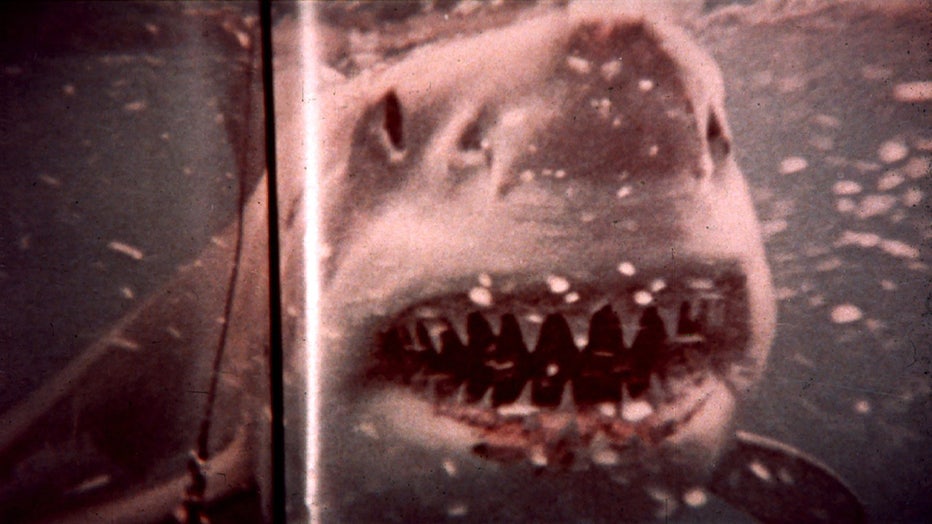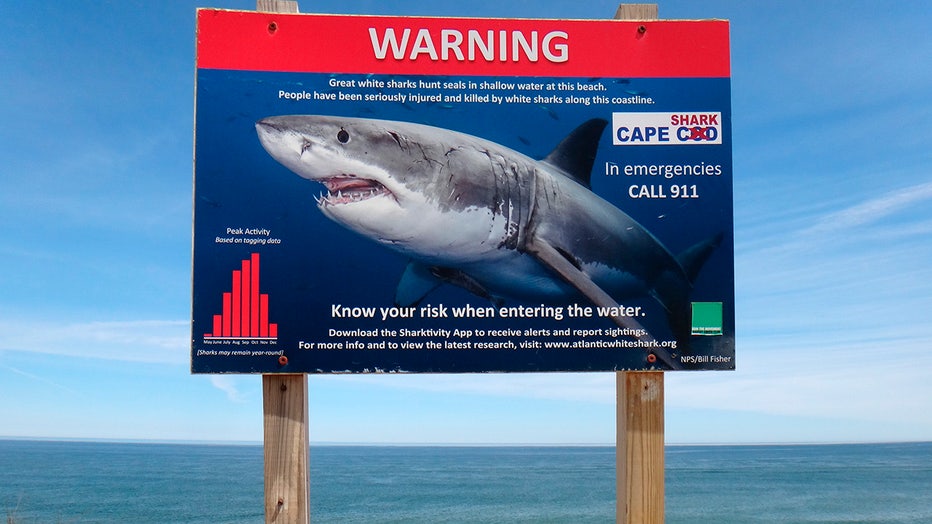‘Jaws’ was fiction; this was the terrifying true story

'Jaws,' the first summer blockbuster, turns 50
The movie 'Jaws,' widely considered the first big summer blockbuster, was released 50 years ago. In this LiveNOW & Then full episode, we'll look at what impact the film had on beachgoers in 1975 and the lasting legacy it left on Hollywood.
LOS ANGELES - The summer of 1916 was already sweltering when terror struck the water. In just under two weeks, a shark killed four people and injured a fifth along the New Jersey coast—some attacks happening miles inland.
Newspapers described a "sea monster" stalking swimmers, and panic quickly spread from beach towns to major cities.
Years later, the story would echo in Peter Benchley’s 1974 novel "Jaws" and in Steven Spielberg’s film adaptation, which launched the summer blockbuster and gave sharks a fearsome reputation that lingers to this day.
Why are the 1916 shark attacks still so famous?
The backstory:
The attacks began on July 1, 1916, when 25-year-old Charles Vansant was bitten while swimming in Beach Haven. A lifeguard pulled him from the water, but he died from blood loss on the sand.
Just five days later, Charles Bruder, a 27-year-old bellhop in Spring Lake, was attacked while swimming offshore. His legs were severed, and he died before help could arrive.
Then came something no one expected: the shark entered Matawan Creek, nearly 30 miles inland. On July 12, 11-year-old Lester Stillwell was killed while playing in the water. A local man, Watson Fisher, jumped in to help and was also fatally injured. Minutes later, a fifth victim, Joseph Dunn, was bitten nearby but survived.

Great white shark seen off South Africa, Atlantic Ocean. (Photo by Reinhard Dirscherl/ullstein bild via Getty Images)
How did the public react to the Jersey Shore attacks?
What we know:
Newspapers across the country ran front-page stories. Tourists fled the coast. Towns closed beaches and put up nets. Some offered rewards for killing sharks—prompting amateur hunters to flood the waters.
One captured shark, displayed in a shop window, was said to contain human remains. But no official coroner’s report confirmed it.
What we don't know:
To this day, it’s unclear if a single rogue shark caused all five attacks. Experts at the time floated bizarre theories, from sea turtles to German submarines.
With limited shark science available, speculation ran wild.
Were scientists able to explain what happened?
The other side:
In 1916, shark research was in its infancy. Some scientists believed sharks weren’t capable of attacking humans at all.
Others, like ichthyologists John Treadwell Nichols and Charles Townsend, tried to identify the species responsible, ultimately pointing to the great white shark as the most likely culprit.
But without solid evidence—no photos, no autopsy, and limited marine biology—much of the case remains unsolved. It’s one reason the story continues to fascinate both scientists and storytellers.
How did this influence ‘Jaws’?

File: Steven Spielberg on set of the film 'Jaws', 1975. (Photo by Universal/Getty Images)
Big picture view:
While Peter Benchley later downplayed the connection, he acknowledged the 1916 attacks inspired the mood and premise of his book.
Shark expert George Burgess, former director of the Florida Program for Shark Research, described the 1916 Jersey Shore attacks as "the most unique set of shark attacks that ever have occurred" in a 2012 interview with Smithsonian Magazine. Spielberg’s 1975 film, based on Peter Benchley’s novel, captured that same sense of mystery and fear—and turned it into box office history.
Both Peter Benchley and Steven Spielberg would later express regret over how Jaws portrayed sharks. Marine scientist Dr. Donald "Reef" Nelson, who inspired the character of oceanographer Matt Hooper, spent much of his career dispelling shark myths fueled by the film.
"I truly and to this day regret the decimation of the shark population," Spielberg told the BBC in 2022, "because of the book and the film." Benchley, in a 2000 interview, said he also felt "somewhat responsible" for the suffering of great white sharks.
What changed after ‘Jaws’ hit theaters?

The "shark" from Jaws. (Photo by FilmPublicityArchive / United Archives via Getty Images)
Why you should care:
"Jaws" made history as the first summer blockbuster. But it also helped turn public fear into fascination—and sometimes hostility—toward sharks. After the film’s release, shark fishing surged, and great whites became the target of fear-driven narratives.
Yet over time, efforts to protect sharks grew. Scientists like Nelson and others pushed back, publishing research, documentaries, and public education campaigns to restore sharks’ place in the ecosystem.
What’s next for shark conservation?

File: Warning sign for great white shark biting incidents, Newcomb Hollow Beach, Cape Cod, MA. (Photo by: Lindsey Nicholson/Universal Images Group via Getty Images)
What you can do:
Today, organizations like the Florida Program for Shark Research and the Shark Lab at Cal State Long Beach—once home to Dr. Nelson—continue to study shark behavior and promote ocean safety.
Supporting shark conservation efforts, learning about shark ecology, and avoiding sensationalized media portrayals all help change the tide.
The Source: This report is based on archival interviews from Smithsonian Magazine, primary research from the Florida Museum of Natural History’s International Shark Attack File, and historical context provided by The Daily Jaws. Additional background was gathered from interviews and scientific commentary by ichthyologists cited in public archives, including Dr. Donald Nelson’s early shark research and 20th-century news coverage of the 1916 attacks.

